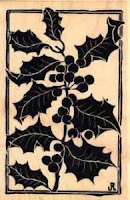Fragrance is a highly
prized feature in my garden. I select plants and shrubs based on their
fragrances, such as the new perfumed Crown Jewel Gardenia PP19896 or the compact lemony Teddy Bear® MagnoliaPP13049, both from Garden Debut®. In addition to
enjoying them on garden strolls, I have been using these flowers for more than
thirty years to make fragrant gifts like potpourri, flower infusions and
essential oils for use in herb crafts and perfumery.
Gardenia Perfume Oil, akso known as Scented Flower Infusion or Enfleurage
Making gardenia
perfume oil, also known as flower infusion or enfleurage, is the craft of steeping
flowers in a carrier oil in order to remove the scent from the petals and
deposit it in the oil. It is a method of making essential oil or perfume oil by
extracting the fragrance from selected scented flowers such as fresh gardenias submerging them in pure oil because they are too fragile to withstand heat-facilitated extraction.
Historically, flowers
and fats (even rendered lard) were placed between glass sheets and pressed. Fat-soluble
fragrance molecules in the thick petals dissolve and transfer their fragrance
from the flowers into the oil they are soaking in. (Water-soluble fragrance molecules
will not dissolve using this method; steam distillation is an entirely
different process.) Essentialoilscompany.com notes that rose oil is a yellow or
colorless liquid and the major component, phenyl-ethyl alcohol, is extracted from
the petals in distillation.
Some recipes indicate specialty non-scented oils
such as coconut, jojoba, almond, grape seed or safflower oil, later fixed with Vitamin E oil,
but beginners can use any oil (such as baby oil or even hydrogenated vegetable fat such as
Crisco) to try out the technique.
Collect perfumed flowers
Remove green calyxes, leaving petals
Place flowers in a ceramic bowl or glass jar
Bruise or macerate petals slightly
with a wooden spoon
Submerge them in a small quantity of non-scented oil; a ceramic bowl or mason jar is good for this step
Cover with a cup of oil and steep for a
few days
Remove the first
batch of fragrant petals using a very fine stainless steel tea strainer and
repeat adding fresh petals, but re-using the same oil to increase the fragrance
intensity
Strain any remaining
petals or fragments from the oil using the stainless steel strainer; can add a
small amount of vitamin E or tocopherol
as a preservative
Bottle the finished
flower perfume oil in a tightly closed glass bottle or an eyedropper bottle
Store at an even,
cool temperature such as a fruit cellar
Use the gardenia enfleurage sparingly to scent
dry potpourri, Epsom salts for the bath or glycerin hand lotion. Or add a small amount to high-test (150-proof
or higher) alcohol to make cologne out of the infused oil.
In addition to
gardenia flowers, magnolias, roses, lily-of-the-valley, lavender, lilacs and whatever
fragrant flowers which appeal to the crafter can be used. All the aromatic
herbs such as sweet marjoram, lemon verbena, oregano, basil, plus spices like cinnamon, cardamom, ginger, nutmeg, allspice and cloves, may all be
used to scent oils. On the internet today, Deborah
Dolen points out that even saw dust (albeit from scented woods), can be used to
make a perfume in a fatty Effleurage method.
So give it a whirl.
I
have a library of books on the topic of fragrant crafts and perfumes dating
back to Ann Tucker Fettener’s Potpourri,
Incense and Other Fragrant Concoctions published by Workman in 1977; Edwin
T. Morris, Fragrance, the Story of
Perfume from Cleopatra to Chanel by E.T. Morris & Company in 1984; Guiseppe
Donato and Monique Seefried’s The
Fragrant Past put out in association with an exhibition by Emory University
Museum of Art and Archeology in 1989; Gail Duff’s Personalized Perfumes by Simon and Schuster in 1994; and Donna
Maria’s Making Aromatherapy Creams and
Lotions by Storey Books in 2000 (to name just a few my dozens).
Each adds a different perspective or contributes additional knowledge to the
mix. I'd like to hear about your crafting!
 One example is
Centre Court™ Cherry Laurel, Prunus caroliniana,
selected by Garden Debut® for its tight, compact branching structure, oval habit
and fragrant white flowers in spring. This broadleaf evergreen is hardy to Zone
7 and can be pruned up into a tree form eventually reaching 30 feet.
One example is
Centre Court™ Cherry Laurel, Prunus caroliniana,
selected by Garden Debut® for its tight, compact branching structure, oval habit
and fragrant white flowers in spring. This broadleaf evergreen is hardy to Zone
7 and can be pruned up into a tree form eventually reaching 30 feet.




























